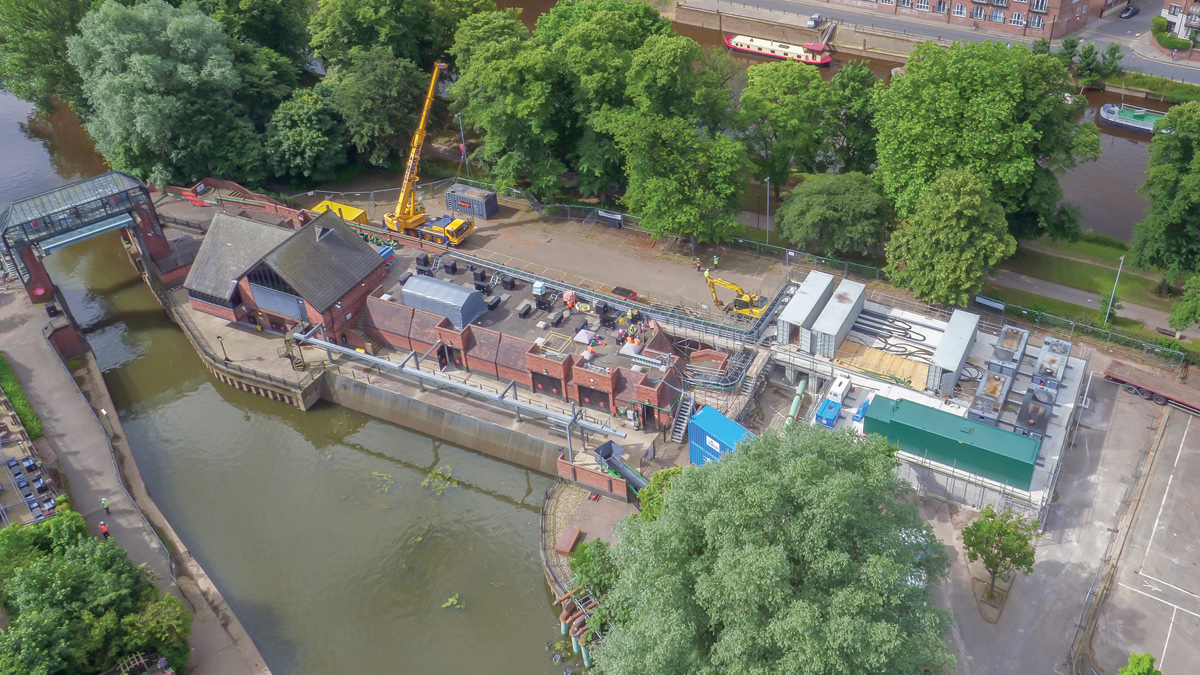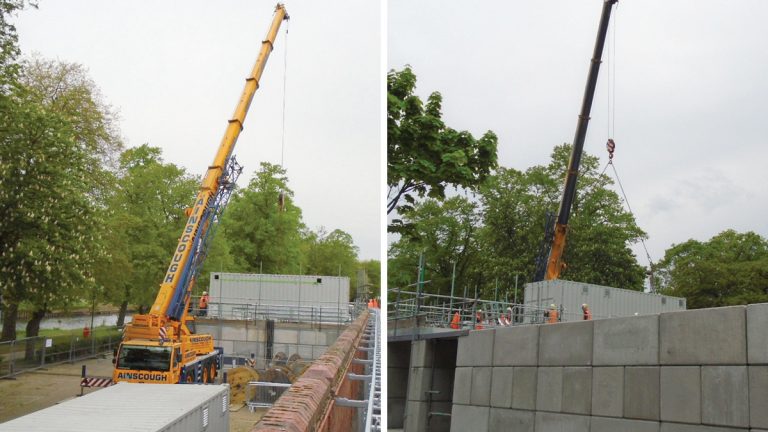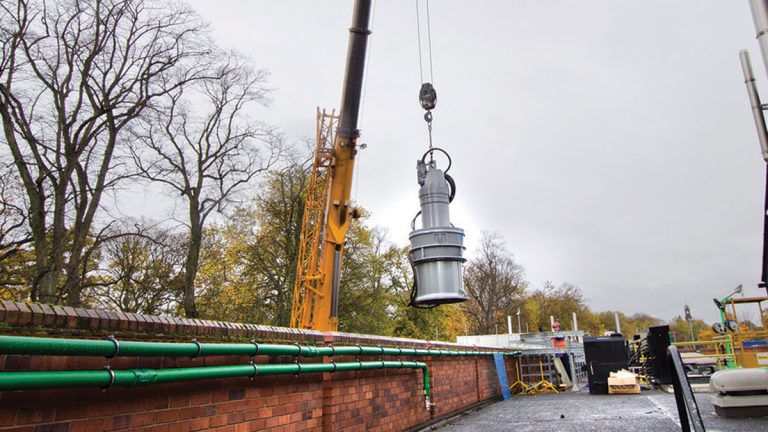Foss Barrier (2017)

Extent of the Foss Barrier Pumping Station including the new temporary platform and steelwork structure - Courtesy of JBA Bentley
Built in 1987, the Foss Barrier forms an important part of the flood defences for the city of York. When a flood event is predicted, a mechanical gate can be closed to prevent rising waters in the River Ouse from backing up into the River Foss, preventing flooding to a large part of the city. When the barrier is down, the facility relies on 8 (No.) pumps to pump flow from the River Foss around the barrier into the River Ouse. In December 2015 the most severe floods in a generation hit the city of York, as the River Ouse peaked at 5.2m above its normal summer level. As waters rose to the highest ever recorded on the Foss, it entered the main control building at the Foss Barrier, damaging the control equipment and therefore rendering the barrier inoperable. After significant involvement in the emergency response to the floods, making the pumping station operational again, the Environment Agency appointed JBA Bentley to deliver the permanent works upgrade to the site to improve the flood protection to the affected community.
Temporary works
An extensive temporary works interim solution was required at short notice to provide flood protection to the site, peace of mind to York residents, and to allow JBA Bentley to facilitate the swift construction of the permanent solution. The temporary solution consisted of a 3m-high raised platform to house the pumping station’s electrical equipment at a safe height above the highest flood level.
Three temporary pumps were also installed within the River Foss; together they provided the capacity of one of the existing eight pumps to enable pump changeovers to take place without loss of capacity. This gave JBA Bentley capacity to then develop the permanent solution. The temporary works were critical to the project and they enabled the pumping station to remain operational throughout the development and delivery of the new facility, providing flood resilience to over 1800 properties.

Installation of equipment onto the temporary platform – Courtesy of JBA Bentley
Permanent works solution
The solution to increase the capacity of the pumping station comprised:
- The replacement of all the existing pumps.
- Increasing the pumping station capacity by 55%, from 30cumecs to 50cumecs.
- The pumping station building itself is to undergo modifications consisting of partial demolition of the existing structure.
- Construction of a single-storey extension to house the critical electrical equipment above the flood zone.
Precast concrete
596 (No.) precast concrete blocks were used to construct a 540m2 temporary platform situated within St George’s Field car park, adjacent to the pumping station. Once dismantled at the end of the project, these can be reused on another scheme, enhancing the scheme’s sustainability credentials. The use of the precast concrete blocks also enabled a safer and quicker method of working, with the platform construction completed in just over eight weeks.
When reviewing the temporary works design, the considerable weight and possible settlement of the structure was considered, and a section of flexible pipework was installed between the ductile pipework to cater for any slight movements. The use of metal decking as an alternative eliminated the need for soffit formwork and the associated health and safety risks.
Building off-line
The implementation of the temporary platform ensured a constant and enhanced flood protection solution, enabling the new permanent solution to be built off-line. This approach enabled the new, larger pumps to be installed prior to any works to the main pumping station building itself.
An emergency response plan was developed collaboratively with the client, so that if an event occurs that requires calling the temporary works into action, everyone knows the plan. Once the electrical equipment was located to the temporary platform, the building was isolated, enabling the required demolition work to be undertaken safely.

Installation of new pumps – Courtesy of JBA Bentley
Stakeholders
The project is an extremely high-profile site for the Environment Agency, situated in the centre of York with many different stakeholders. One of the most significant of those groups are the residents of York themselves, who endured the destructive flooding in December 2015. It was therefore imperative for the client that a solution was devised and implemented quickly. The temporary platform also offered reassurance to the residents of York that the pumping station was operable again and was less vulnerable to flooding.
The implementation of the temporary works solutions (platform) saved time on programme through the use of precast concrete blocks as opposed to in situ concrete. This time saving was imperative as the temporary works were called into action when the barrier went down in November 2016 for three days, pumping in the region of 10m3/s at the peak.
Successes
Installation of permanent works equipment on to the temporary platform reduced the need to hire some of the equipment, thereby saving money. Offline construction has also enabled efficiencies to the programme and will reduce any potential interface issues when commissioning the new pumping station. The ability to reuse the precast blocks will also result in cost saving for future schemes.
Chris Milburn, Project Executive with the Environment Agency, commented:
“Following the December 2015 floods, the project team adopted a collaborative working approach to streamline the design and construction process. This allowed the team to specify, procure and install the new pumps in less than 9 months. The temporary works arrangement allowed this to occur whilst still maintaining a working pumping station.”




